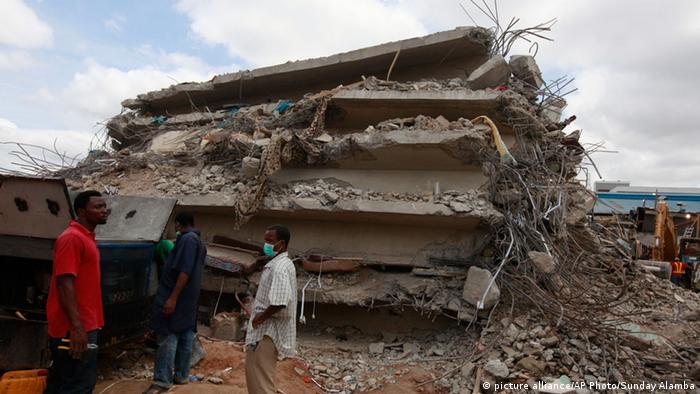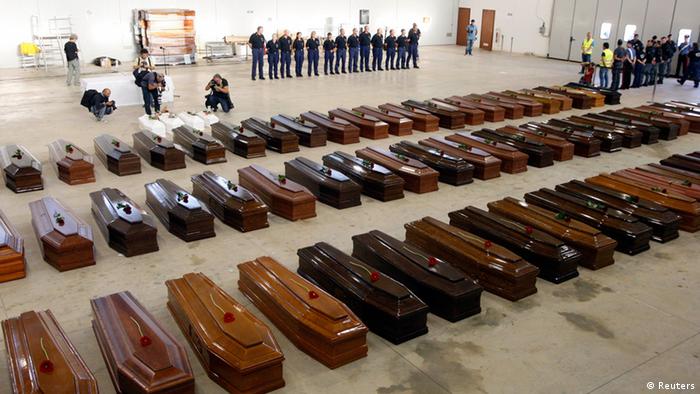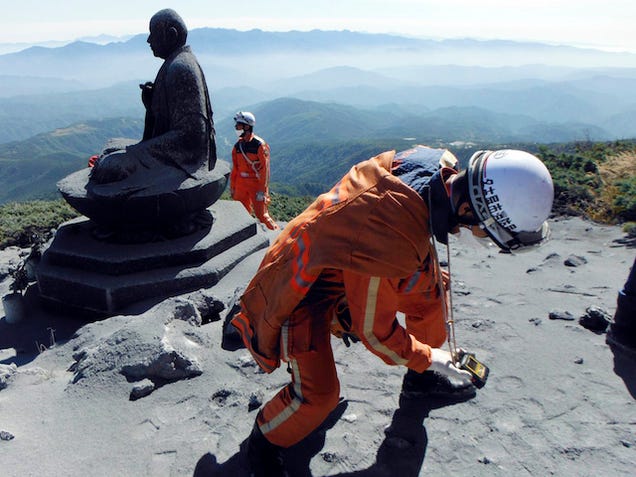
The bodies of about 80 South Africans killed when a church building collapsed in Lagos more than three weeks ago are decomposing in inadequate Nigerian mortuaries while officials there frustrate the South African government’s efforts to accelerate the identification of the remains.
The Sunday Independent understands that in some mortuaries the bodies are being kept cool only by fans, with no refrigeration.
The Nigerian government has denied this, insisting it has adequate mortuary facilities to properly handle the 116 people who died as a result of a guest house collapsing in the grounds of The Synagogue, Church of All Nations in Lagos on September 12.
But a statement issued by the South African government on September 28 hinted at the state of the bodies: “Part of what was communicated to the families is that, due to the scale of the disaster, passage of time and climatic conditions, most of the mortal remains are not in a good state.
“Out of concern for potential secondary trauma to the families as well as public health considerations, government discourages all families from viewing the mortal remains.”
The agonising wait for the South African families will not be over any time soon.
According to a government official who did not want to be named, the delays have been caused by the political haggling between South Africa and Nigeria.
The official said the Nigerian government has been refusing to have DNA analysis conducted in South Africa “even though they don’t have the expertise, facilities and skills”.
The Sunday Independent understands that the Nigerian government has finally agreed to have the DNA analysis done in Cape Town.
“The truth is the bodies won’t be coming home any time soon. Imagine the agony of the families of the people who have been waiting for several weeks to find out if their loved ones have died. They have to assume they are dead until the DNA tests’ results have been concluded.”
Family members waiting for the bodies in South Africa are growing increasingly angry at the delay.
This weekend some of them had to postpone funerals because the bodies did not arrive and there is still no indication when they will arrive.
Though African custom dictates that relatives should view the bodies before burial, the South African government has indicated all the coffins will be sealed in Lagos before the bodies are returned together because of the state they are in.
“We are now confronted with a unique set of circumstances that make it extremely challenging for us to observe this respected custom of our people,” it said.
The death toll rose by one – to 116 – this week when one of the Nigerian survivors died in hospital.
Although the South African government originally announced that 84 of those were South Africans, it disclosed last Sunday that three were from Zimbabwe and one from the Democratic Republic of Congo.
The Nigerian government has aggravated the delay in returning the bodies by refusing to allow the South African government to participate in the post-mortems or to do the DNA analysis to identify them, sources said.
Because of the state of the bodies, just over 40 of the South African bodies could be identified by fingerprints.
The rest now have to be identified by DNA.
But the Nigerian government would not allow the South African pathologists and forensic experts who travelled to Lagos to take DNA samples from the bodies, insisting on doing that itself.
And it would not allow them to do the matching of the DNA samples with the DNA of the relatives of the dead.
It insisted on commissioning a private company in South Africa to do the DNA matching in South Africa, sources said.
“They said the South African government was ‘conflicted’,” one source said.
“They seemed to think the government would tamper with the evidence. Why would the government tamper with the evidence?”
On Friday, the South African inter-ministerial task team set up to deal with the disaster announced that the Nigerian authorities had completed the post-mortems and had finalised the collection of DNA samples from the bodies.
Nigeria was also “currently finalising the administrative processes to transport the exhibits to a forensic laboratory for comparison purposes. The fingerprint verification process is still under way”.
The government statement said that South Africa’s Consul-General in Lagos, Sam Monaisa, met Nigeria’s High Commissioner to South Africa, Sunday Yusuf, on Thursday “to thank the Nigerian government for their co-operation during the repatriation of the injured”.
“The meeting also discussed the way forward towards the repatriation of deceased South African citizens.”
Sources said they did not know when the DNA samples would arrive in South Africa and the Nigerian government had not said which company would match the samples with those from relatives.
However, officials said Pretoria was “nursing” the relationship with Nigeria and the statement masked considerable frustration by the South African government at the way Nigeria was so jealously guarding its turf in the process of identifying the bodies.
“Government understands the toll this long period of waiting is taking on the affected families,” the task team statement said.
“We urge families to continue to bear with us. The validation and confirmation process are vital to ensure that families receive the correct remains.
“To minimise financial strain, we urge families to put funeral arrangements on hold until we receive confirmation from the Nigerian authorities on when the repatriation is going to happen.”
It is believed that some families had planned funerals for this weekend, expecting the remains of their relatives would be home.
Government spokeswoman Phumla Williams declined to comment further, referring to statements the government had issued on September 28 and October 3.
In Nigeria, Hakeem Bello, the spokesperson for Lagos State Governor Babatunde Fashola, said they felt insulted by criticism that they did not have mortuaries to take care of the bodies of the South Africans.
Said Bello: “We recorded a more complex disaster during the Dana air crash in Lagos in 2012 in which 153 persons were burnt beyond recognition. Did we not identify the bodies of the victims?
“In the case of the Synagogue building collapse, the State Health Commissioner even called on relations of victims to come forward and provide tissues and sample evidence for a DNA test. Does that not show a more sophisticated environment?’’
A source at the Lagos State Ministry of Health also insisted the state had enough mortuary space.
“We have 24 general hospitals. The mortuary in (the Lagos State University Teaching Hospital) is a world-standard mortuary.
“We have mortuaries in Gbagada General Hospital, Lagos Island, Lagos Mainland General Hospitals and, in fact, in all the 25 hospitals in the state, and there are also private mortuaries which are all world-standard.’’
He added that whoever had said Lagos did not have enough mortuaries to take care of bodies of the South Africans must be saying this so that the South African government would hasten the removal of the bodies to their country.
Sunday 05 October 2014
http://www.iol.co.za/news/africa/lagos-victims-bodies-are-rotting-1.1760132#.VDEPK_nF8Ro




